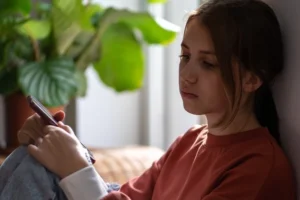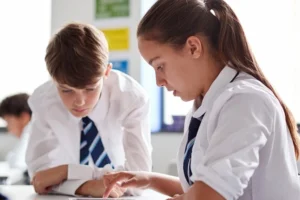Teens are more likely to have their own devices and multiple methods of socialising, but helping younger children maintain their friendships requires more effort from parents.
It’s vital for all age groups to continue connecting with their peer groups, to boost their positivity and wellbeing. There’s a huge range of ways they can connect digitally, so here are some tips to help facilitate safe and rewarding interactions for children and teens – from what tech to use, how to make it fun and reminding them about what they should and shouldn’t share.
Early years (under 5s)
The changes to their routine may feel enormous for young children so putting some playtime back into their day with friendly faces from school or nursery should help this transition – and take some pressure off busy parents.
- Set up a parent group online If you don’t already have one, setting up a Facebook or WhatsApp group for your child’s class can help you connect with other parents – your nursery or school may be able to help with this through their own social media channels. Agree some guidelines like not sharing any content, images or personal information beyond the group.
- Make use of video chat tools
Use tools such as Skype, Google Hangouts or Zoom to connect everyone for a virtual playdate and build it into the schedule so children know when it’s happening. Full class groups will be hard to manage so limiting numbers to ten or under will be more successful. Be aware that this new way of communicating may feel awkward for them and group chats may get dominated by more confident children.
You could rotate different children taking the lead, so everyone feels involved – doing a show and tell or introducing their pet or favourite toy.
- Record a video message
If you can’t do a video call, then a nice option for this age is to record a video of your child giving a message to their friends and send it to your private group.
Primary-age children (6-10)
This age group may feel the separation from their friends the most as they have established friendships and are less likely to have their own devices to stay in touch.
- Secure devices for children to use
Groups can be set up in the same way as for early years, but they may also want to have one to one conversations with their closest friends without parent mediation as they would in the playground. If you’re happy for them to use yours or a family device for this, make sure groups and conversations are private and you’ve applied the appropriate safety settings and restrictions (to include any other apps on the device). Also, take some time to talk to children about what they should and shouldn’t share when chatting with friends online, and to always be kind.
- Opt for child-friendly social apps
There are also some safe social media tools for primary age children or you could ask your child’s school whether they can help.
- Suggest activities to do during video calls
Give them some ideas of activities to do together, like playing a game or setting up a book club or Netflix party so they can talk about things they’re enjoying. Again, schedule this into the day so it’s balanced against their other activities and gives them something to look forward to.
Secondary school-age children (11+)
Most children in this age group will be established users of social media and it’s likely that they’ll want to spend more time on their devices. So it’s a good time to sit down and remind them about staying safe and that the same rules apply regarding how they should behave online during the lockdown.
- Check-in on how they are socialising online
Find out what apps they’re using and make sure they have the correct privacy settings, particularly if they’re starting to using apps like Snapchat. Chat about the potential risks of being online more, what to do about cyberbullying and being asked to share inappropriate images, particularly if they’re separated from a boyfriend or girlfriend.
Accept that their screen time will increase, but encourage them to use screen time tools or activity monitors to see how their usage is changing and what impact this might be having on their physical activity or sleep. Most importantly, continue to check in with them and be prepared to help them through the anxiety that being separated from strong friendship groups may cause.






